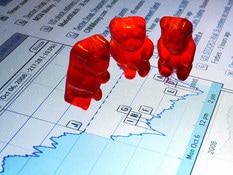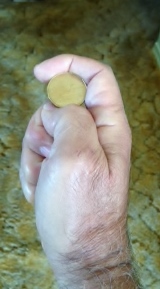|
Problems force us to make choices, however, often the choices we make resonate with our present thinking. And, our present thinking reflects our life experiences that form our identity, our sense of self and our own personhood. If this true, then when we face a problem which suggests we choose a different path, or a different way of doing things, the decision to choose that path becomes hard.
The act of solving a problem forces us to choose, to seek alternative ways to the way we think about or do things. When we work through this process we often choose a solution that re-enforces our present way of thinking and acting. Thus, we think inside the box rather than outside the box. It’s not a breakthrough choice. We become trapped within our own world and keep doing what we always did. We don’t want to change, because change takes us out of our comfort zone. When we are asked to move out of our comfort zone, we often resist. Sometimes we fight, flee or acquiesce in a passive aggressive way by not really accepting the new path and may, consciously or unconsciously, work to undermine the process of moving forward. This is why, when leaders see a need to take a different course than what people are used to or are comfortable with, they often meet with resistance. On the one hand, leaders see a need for change and on the other people through time and experience have engendered a sense of “fit” with their work and their present way of doing things. They have clothed themselves with a sense of comfort with what is. They are not ready to take on the unknown and the ambiguity of it all. So how do we as individuals get comfortable with choices that don’t seem to fit with our way of thinking? And how do leaders help others choose a different path? As individuals we can:
As leaders we can:
Quote: “When you change the way you look at things and the things you look at change” Wayne W. Dyer Author: Richard P. Fontanie MSW, FCMC
0 Comments
Many years ago, I learned that we solve problems not by focusing on opposites but by finding opportunities for breakthrough solutions. We often think in two-way or duality terms such as an "I'm right, your wrong mentality." One solution to this dual thinking is to pose a win-win solution. That somewhere between the two positions there must be a middle. The result usually means each gives up something to obtain a resolution, and in finding that resolution each loses something in the transaction. The other solution to the win-win scenario is win-lose, or lose-lose. I win, you lose or we both lose. In these situations, we go head to head and negotiate a middle ground, lose, win or walk away.
Win-win, win-lose, lose-lose are strategies where people often leave the situation feeling unsettled. They give up something to gain something, or don't give up at all. In a breakthrough resolution approach, we are not thinking with a win-win mentality, we are thinking opportunity, something new, a third dimension or a new creative outcome. For breakthrough solutions to reach full fruition dialogue, collaboration, empathetic listening and transparency of thought are necessary. Finding breakthrough solutions belies the more conventional approach of individual competitiveness. Rather than competing, a breakthrough approach relies on mutuality and collaborative effort. The process of coming to a solution each empowers the other. In this way, a solution benefits both while at the same time expresses something new. A new entity arises from the two positions but different from them. If we can resolve problems using this method perhaps we can begin to transform injustices in our workplaces, engender greater respect for each other, strengthen mutual high regard, and in the end, find more enduring solutions. To become "breakthrough" champions we need to learn how to become less selfish and egotistical, or another way of putting it, we will need to learn how to become more adult in our approach and less of the righteous and petulant adolescent. One of the keys to breakthrough thinking is to blank out the way we usually solve problems. Rather than framing a situation from one's point of view as a position to defend we suspend all judgement and approach it with new set of lenses. We look for mutual opportunity without the resistance of personal positioning. Does this mean we suspend our experience? After all, we are who we are based on our experience - it forms our world view about how we approach others and our problems. The short answer is no. It is how we frame the situation and our response that becomes the basis of our breakthrough. An example of this often occurs in meetings when people say such things as 'this is the way we handled this issue in the past," or "we tried that back in 2002, and it didn't work." This is not breakthrough thinking, this is rear view mirror thinking. Breakthrough thinking draws on our experience without specific reference to the past and looks for new opportunities in the present that will lead to a better outcome in the future. Too many good solutions get shelved because people shut off the flow of creative thinking by dwelling on the past rather than using that experience to explore opportunities which lead to solving today's problems. When we seek a breakthrough solution we don't think in dualistic terms such as right and wrong, black and white, this way or that way, but rather in triangular or ternary terms. What flows from this and that, black and white, right and wrong, past and future, produces a third opportunity. What flows from black and white is gray, neither black nor white; what flows from right and wrong is situational choice based on conscientious discernment, and what flows from past and leads to the future is the wisdom of the present. Each is a distinct entity different and unique from the other, but flows from the energy of the two to make a third opportunity or result. At times breakthrough thinking seems to come from a force outside ourselves. It is one of those "ah, ah moments," where a bolt of creativity strikes, and we ask, "where did that come from?" It presents itself not in dualistic terms but as something new and fresh. It may be a result of our subconscious working on the issue, or may be a force beyond ourselves, which many refer to as their Spiritual Source. It is Archimedes in the bathtub or Mary in the last meeting who said, " I just had a unique idea that I think will break our log jam." It is not easy to arrive at a breakthrough because we seem to be wired to think in opposites and defend our positions rather than seek a third, different course. It takes discipline, energy, collaborative effort and a mutual commitment to go beyond our present world view. Let's take a couple of typical examples from my own consulting practice:
One of the challenges with breakthrough solutions is that it leads to change because the solution is different from what exists; and this is the rub, because people are often resistant to change (see articles on change). However, if they are engaged in finding a breakthrough the change is embraced as a natural flow from the solution; if they are not engaged then preparatory work is necessary. An edict will not work but a process of open communication, encouragement, empathetic listening and engagement from the ground up will. What to do: Breakthrough solutions are not always easy, nor are they always possible. However, if we strive in good faith to seek solutions outside of our constricted thinking we may discover better solutions, or at least be clearer about the problem at hand and possible opportunities they present. In any event when approaching breakthrough solutions: Be calm. Remain neutral. Keep ego in check. Suspend judgement. Be open to all possibilities. Listen deeply and empathetically Communicate and collaborate openly. Wait for, and discover together, the "Ah!Ah!" moment. Prepare self through meditation and work with others unselfishly. Think opportunity, not in dualistic terms but in third-way and creative terms.  From time to time leadership teams are faced with a major strategic decision to reduce and redirect dollars and human resources to meet a major downturn in the marketplace. Let's take the scenario where they don't want to let staff go, nor do they want to shift their services away from what they know what works and what made them successful. Revenue is dwindling fast and if they don’t do something soon they know they will be attending one of those dreaded meetings with their banker. If you are in this position it is time to take a surgeon’s look at all your policies, processes and procedures. Engage your key management personnel in finding ways to do more with less. Your task is to map out everything and measure it against your overall strategic direction. In today’s parlance this would be akin to LEAN, - when we did this we called it "Finding Efficiency." Your overall strategy is to find the savings to weather the storm without terminating employees. One way to accomplish this is to follow a rigorous decision-making process with the following steps:
Finally, make sure that the decisions you make accomplish the results you intended. So evaluate the results on a quarterly basis and “tweak” the decision to meet new conditions as they arise. Here is what I found when companies did this: the economic storm was weathered and the company moved ahead with an improved bottom line which allowed them to keep their valuable people and improve services to their customers in the long term. From the archives, Fontanie Learning Solutions Are you caught in a "rush trap"? A "rush trap" happens when you feel you need to make decisions before you are ready. It occurs when we feel pressure from our boss, colleagues, customers or from our own anxiety to "make a decision now!" When faced with this predicament I always asked: "What will happen if we don't make the decision right now?" The answer led me to believe that the end of the world wasn't at hand, the business wouldn't fail or we wouldn't lose the customer. We still had time to stop and to discern the best approach. Discernment, however, may be becoming a lost practice in today's fast paced world.
Our race to make quick decisions has exponentially increased with the advent of email, text messages, cell phones, and instant access to information. If we don't answer emails right away, the telephone starts ringing from our colleagues or customers asking about the email they just sent, and what are we going to do about it. Just a bit more pressure, right? Not too long ago we used to send and receive memos and letters by "snail mail." The mail service gave us enough time to frame an appropriate response because we knew it wouldn't go out until the next day. Today's business environment dictates a more immediate response. And this will not slow down soon as the use of technology to interact with those important to us will continue to increase for the next several years. Often we react to this pressure by sending emails followed up by more emails. For example I have received emails as well as sent them with only partial information. Now what happens? I either send more information to clarify my first email or recant the first email and send a different response reflecting a change in the decision. All resulting in confusion or increased scepticism down the line. Why do we put ourselves in this position? Is technology governing us or do we govern technology? It's time to get back in control of the decision-making process. What to do: According to Wisdomcommons discernment is: "the ability to grasp, comprehend and evaluate clearly..." When we discern we seek to make the best possible judgement with the information we have at the time. Sometimes the issue is quite complicated and we need more reflective time or to call upon a higher power before we decide. I have found that working through a difficult decision with prayerful and reflective silence has a settling effect on the decision-making process. It calms the mind and allows me to respond with greater clarity. Take time to discern an appropriate response when called upon to make difficult decisions - even when pressured by others. Richard P. Fontanie MSW, FCMC, Updated from the archives Fontanie Learning Solutions.  It is not the decision you make that is important, it is the judgement about the decision you made that is important. That judgement is reflected in the actions you take. And, the actions you take determine whether your decision is based on sound or poor judgement. Business and public policy is sometimes murky business. Often decision makers live in the gray zone, or as I like to call it the “amorphous marshmallow zone.” Things are not always as clear as they would like them to be, and this for many reasons. They try to filter out the best alternatives to a difficult situation and at some point after weighing the pros and cons they make a decision. This is where judgement comes in. What is judgement anyway? Judgement could be described as the ability to make “a decision or forming an opinion, objectively, authoritatively, and wisely, especially in matters affecting action; good sense and discretion.” (Dictionary.com). We may have heard the sage dictum that “good judgement comes from experience and that experience comes from the exercise of bad judgement.” Perhaps in time we become wise decision-makers coupled with good judgement. Leaders are assessed not by the decisions they make, but by the judgements they make regarding the choices surrounding the decision. In matters of public policy they are buffered with conflicting political and public opinion. It is not easy to steer a steady course when leaders are caught in a vortex of conflicting opinions. The same is true when business leaders are caught on the horns of a dilemma as they face difficult ethical issues or critical decisions about opposing strategies and tactics. In cases like these emotions usually run high and leaders are asked to make almost King Solomon type decisions. It is in these emotionally charged situations where leaders need to strip away the emotion and make a decision based on their best judgement. Judgement then has an emotional quality to it. Making a judgement requires a certain amount of emotional restraint or emotional intelligence as Peter NG Kok Song once said. The more we can detach ourselves emotionally from the decision the more we can look at it objectively. The more emotion we have invested in it, the more difficult it is to divest ourselves from our emotions. How do we get out of this conundrum? I think there are two approaches and they could easily be viewed as two sides of the same coin. The first approach suggests we take time out and emotionally detach ourselves from the situation through meditation. This sounds like a contradiction, but meditation allows us to free our mind from distracting thoughts and at the same time gives us room to think more clearly. By freeing the mind of emotional turmoil we give it space to think more clearly. By thinking more clearly we have a greater chance of making better choices. The second approach suggests we clarify the principles that impinge on the decision and then we make the decision based on those principles. This requires leadership based on values that reflect a commitment to service and the common good for the public, customers and employees. Value based leadership reflecting common principles allow us to make better choices outside of the realm of ideology and the pressures of strong egos, including our own. Meditating is a solitary process whereas arriving at common principles is an engaging process. Through meditation we clarify our own thinking. Through engaging others, we arrive at common principles for the higher good. That is why I suggest the two approaches are two sides of the same coin. Both are often required to make a sound judgement call when confronted with difficult and murky decisions. It is not just heads or tails by the flip of the coin. I find poor judgement often occurs when people make quick decisions based on emotion and impulse. I have witnessed this in my own behaviour and in working with others in business and public service. We refer to this as a “knee jerk reaction” to an emotionally charged situation, or trying to find an “easy way out” when much more consideration and circumspection is required. Take the time to make the best judgement call not the most expedient and let your actions reflect sound judgement. You're going to come across people in your life who will say all the right words at all the right times. But in the end, it's always their actions you should judge them by. It's actions, not words, that matter. ― Nicholas Sparks, The Rescue Question: What do you do when you are faced with difficult choices? AuthorRichard Fontanie, MSW. FCMC, From the FontanieLearningSolutions Archives..  In our personal, business and organizational world we are often faced with difficult decisions. At times we find ourselves caught on the horns of dilemma and we freeze in the decision making process. We freeze because we fear we will make a wrong decision. When we finally do decide we often replay it over and over in our mind with the question: "Did I make the best decision?" What to do:
There is nothing wrong in reviewing the first decision and the decision making process to learn from it. We shouldn't go back though and “beat ourselves up” over the process. Learn from it then leave it and move on. Finally, If you are struggling with a personal decision find someone you can trust and talk it through. An objective ear and insight can do wonders in finding a solution. Abridged from FontanieLearningSolutions. Image from: www.freedigitalphotos.net |
Categories
All
Archives
June 2024
|


 RSS Feed
RSS Feed


